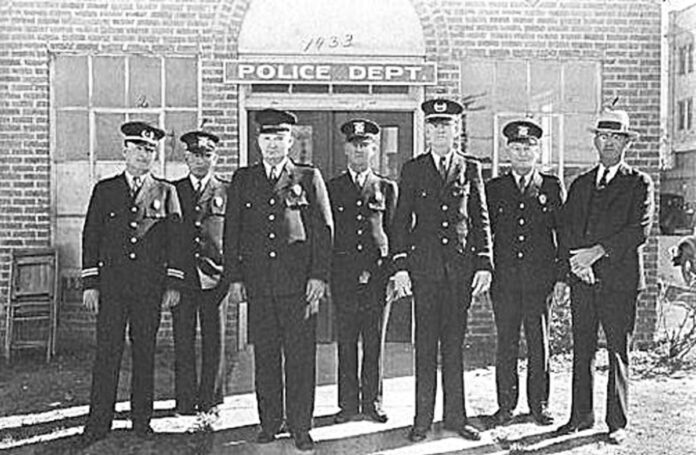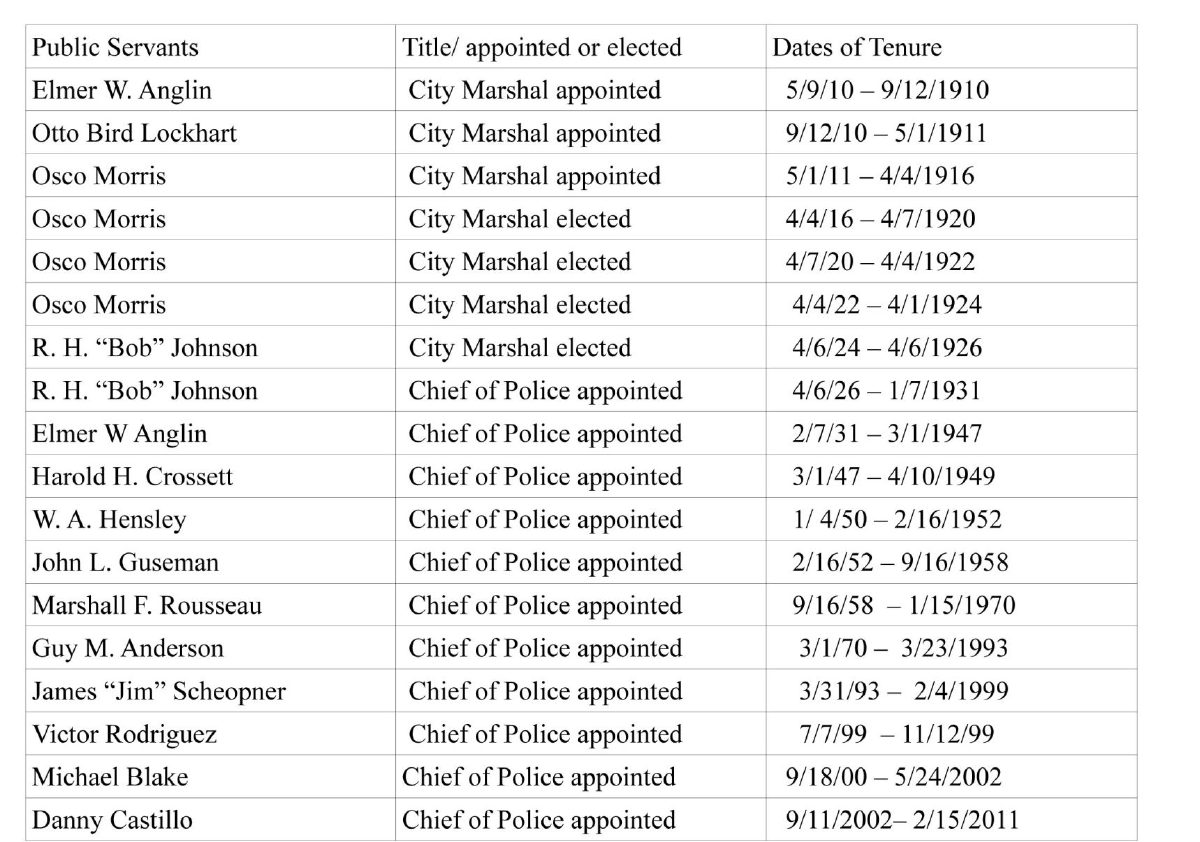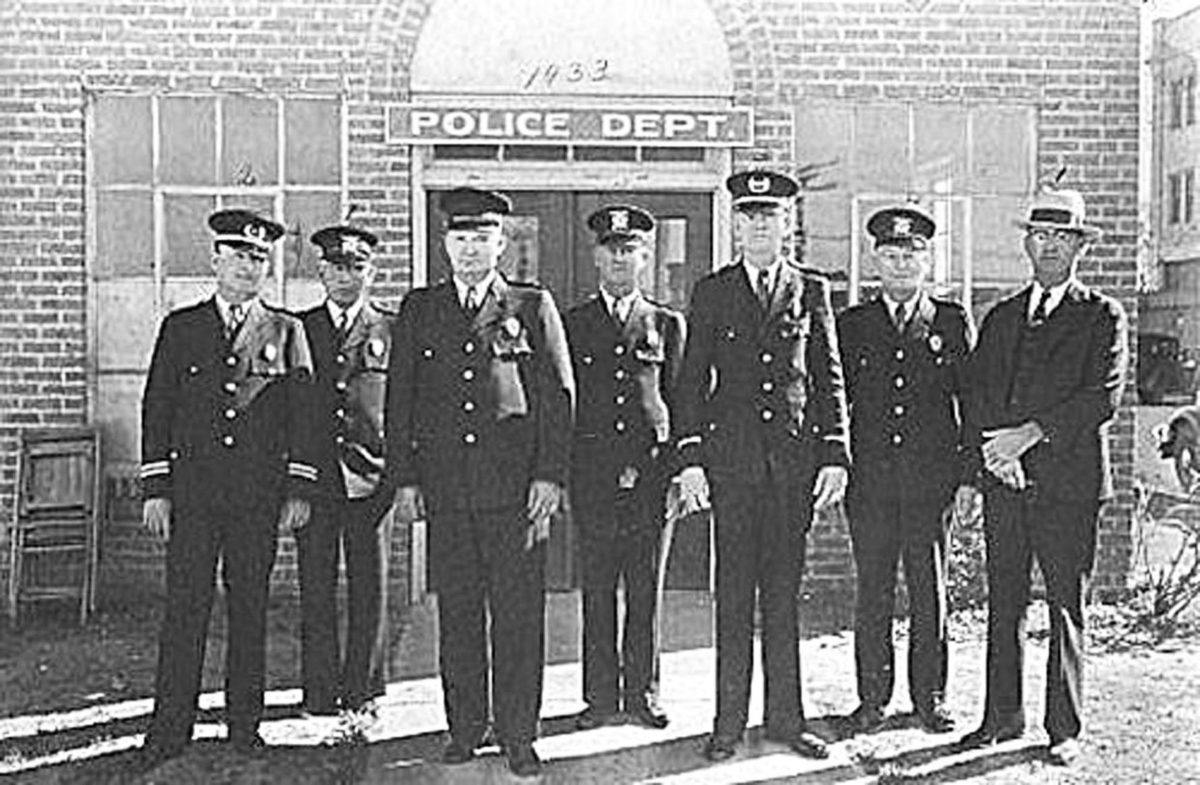BY NORMAN ROZEFF
Upon the legal formation of the commission form of city government in April 1910, Harlingen, when its population was estimated to be 300, established a law enforcement department.
The first appointed city marshal was Elmer W. Anglin. Anglin had arrived in Harlingen from Alpine, TX with his wife and four children in October 1907. Alpine had been their home for seven years. His brother Everett from Gonzales, Texas, had preceded him in 1905 when he came to Six Shooter Junction (as Harlingen was called by some) as a Texas Ranger. Everett would go on to become a border custom inspector.
At first, the Elmer Anglin family reside near the Hill complex until building a two-story home north of the City Lake.
On 1/2/18 they moved into the new two-story wooden frame house they have constructed at 201 E.Madison St. The building is currently occupied by a law firm.
The area to the west of them across the street is a campsite for tourists and home seekers though overgrown with mesquite and brush. It will later become Bowie Park and still later the site of the Casa del Sol.
Anglin takes over the management of properties and business ventures for Lon C. Hill.
He manages the plantation in particular, so Gordon Hill and Lon C. Hill, Jr. can go off to school in Austin. It is natural then that the city fathers would select a close associate of city founder Lon C. Hill as the initial city marshal.
For a number of years the city marshal is appointed then elected for a decade before the title becomes chief of police and becomes once again an appointed position.
Following is a table outlining the individuals who have served as law enforcement leaders and their service periods for the city.
(SEE THE LAW ENFORCEMENT LEADERS OF HARLINGEN PHOTO)
Serving under Anglin were W. H. McMinn, known as Uncle Mack, Wes Fonsville, Mackie Chaudoin and J. Villareal. When he is about 23 years old in 1910 L. Mackey Chaudoin came to Harlingen, where family members already resided, from Gonzales. Soon he enters the law enforcement field. On 8/10/35 tragedy is to befall him.
After pursuing a stolen vehicle, he is shot by George Dunlap, one of its occupants. While Dunlap is killed in an exchange of gunfire, Mackey is seriously wounded and will die 2/19/36 in Dallas where he has been taken for treatment. The well-liked forty-nine year old Mackey will leave behind a wife, May, and four children.
Anglin’s successor, Otto Bird Lockhart, was the son of an early Harlingen settler, James Lockhart of Louisiana, who in 1904 would serve as Harlingen’s first postmaster. Otto, who was only 21 years old when he served as marshal, would go on to serve in the U.S. Army during World War I.
The city’s first physical jail was known affectionately as “Black Maria”. Initially there was no jail to incarcerate law offenders. A detainee was restrained by a good chain to the nearest mesquite tree. In remembrance of this a marble plaque stood at one time in front of a tree at the corner of 4th Street and Harrison Avenue.
It read “There is a legend which states that this tree was one of the chaining trees used in the early days of Harlingen law enforcement in lieu of a jail.”
1924-26 Under Mayor Joe E. Roberts the city allocates funds for parks, establishes a County health unit, builds a dog pound, and installs street signs. In 1925 bonds are voted to build a city hall, a fire station, and a jail.
The solid two story, white painted jail building with its barred windows still exists on the railroad side of 523 North Commerce between Adams and Washington Streets.
Serving as a deputy under Chief Bob Johnson was Narciso Noyola.
Lt. Harold “burglary specialist” Crossett would go on to employment in the Federal Bureau of Investigation (FBI).
Before his appointment as chief, W. A. Hensley had served as a juvenile officer, detective, and sergeant of detention. Under his leadership the department hired the first woman on the force.
John L. Guseman had been a sergeant on the San Antonio police force and at one time had been employed as a guard in the Leavensworth (Federal) Penitentiary in Kansas.
Marshall F. Rousseau is appointed chief of police (11/1/58) and serves until 1/15/70 when he accepts an appointment by President Nixon to become a U. S. Marshal for the Southern District of Texas.
Before accepting the position in Harlingen Rousseau previously had served as Deputy Sheriff in Port Isabel and before that as a captain in the Brownsville Police Department.






